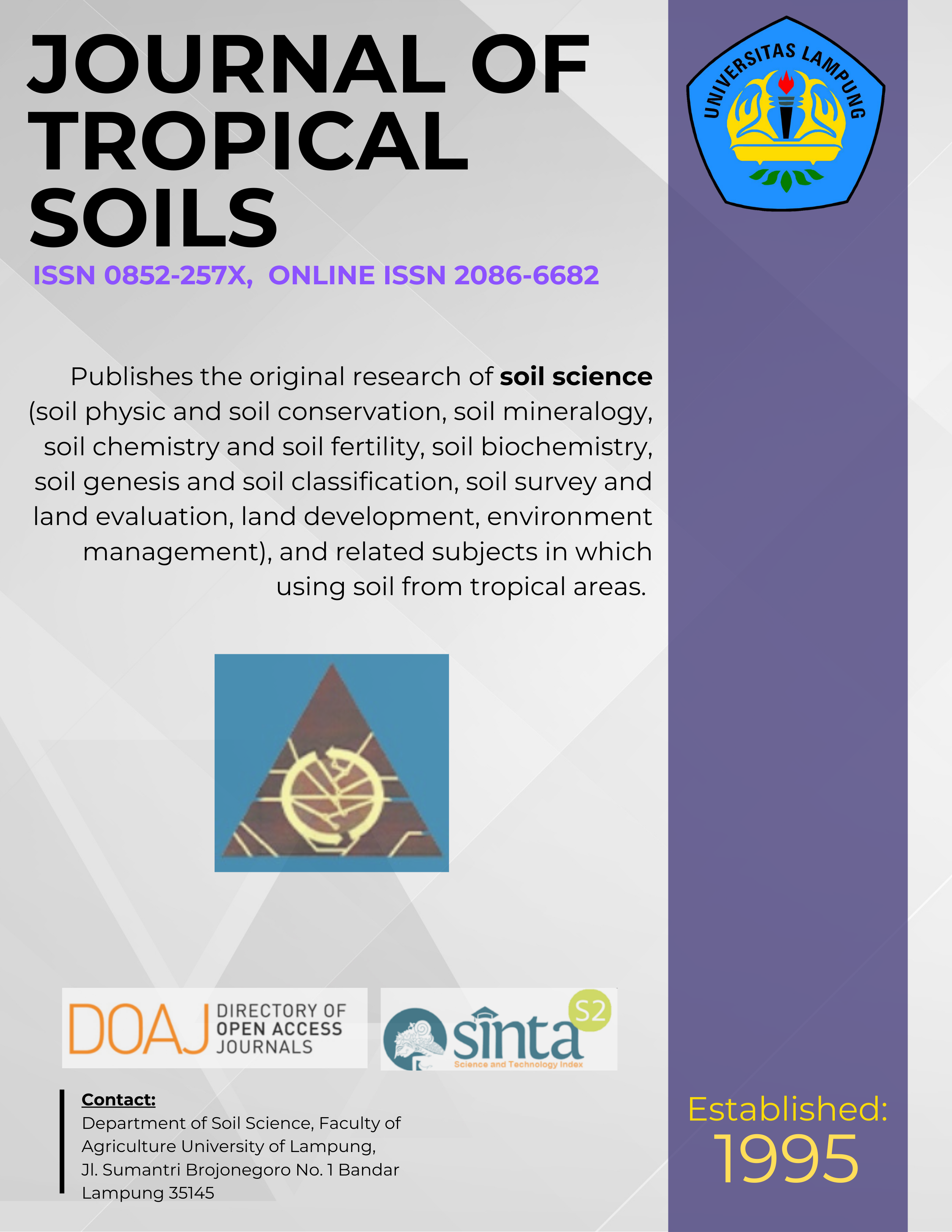Influence of Height Waterlogging on Soil Physical Properties of Potential and Actual Acid Sulphate Soils
Main Article Content
Abstract
Water management is main factor that determines the successful of rice cultivation in acid sulphate soil. Soil waterlogging determines the direction and rate of chemical, geochemical and biological reaction in the soil, indirectly these reactions may influence to the changes of soil psycal properties during soil waterlogging process. The experiment was aimed to study the changes of two type of acid sulphate soils physical properties during rice straw decomposition processes. The research was conducted in the greenhouse consisting of the three treatment factors using the completely randomized design with three replications. The first factor was soil type: potential acid sulphate soil (PASS) and actual acid sulphate soil (AASS). The second factor was height of water waterlogging: 0.5-1.0 cm (muddy water–level condition) and 4.0 cm from above the soil surface (waterlogged). The third factor was organic matter type: rice straw (RS), purun tikus (Eleocharis dulcis) (PT) and mixed of RS and PT (MX). Soil physical properties such as aggregate stability, total soil porosity, soil permeability, soil particle density and bulk density were observed at the end of experiment (vegetative maximum stage). The results showed that acid sulphate soil type had large effect on soil physicl properties, soil waterlogging decreased aggregate stability, soil particle density and bulk density both of soil type.
Keywords : Acid sulphate soils, soil physical properties, and waterlogging
[How to Cite: Arifin F, A Susilawati and A Rachman. 2014. Influence of Height Waterlogging on Soil Physical Properties of Potential and Actual Acid Sulphate Soils. J Trop Soils 19(2): 77-83. Doi: 10.5400/jts.2014.19.2.77]
Downloads
Article Details
Issue
Section
License for Authors
Authors who publish with this journal agree to the following terms:
- Authors retain copyright and grant the journal right of first publication with the work simultaneously licensed under a Creative Commons Attribution License that allows others to share the work with an acknowledgement of the work's authorship and initial publication in this journal.
- Authors are able to enter into separate, additional contractual arrangements for the non-exclusive distribution of the journal's published version of the work (e.g., post it to an institutional repository or publish it in a book), with an acknowledgement of its initial publication in this journal.
- Authors are permitted and encouraged to post their work online (e.g., in institutional repositories or on their website) prior to and during the submission process, as it can lead to productive exchanges, as well as earlier and greater citation of published work (See The Effect of Open Access).
License for Regular Users
Other regular users who want to cite, distribute, remix, tweak, and build upon author’s works, even for commercial purposes, should acknowledge the work’s authorship and initial publication in this journal, licensed under a Creative Commons Attribution License.

